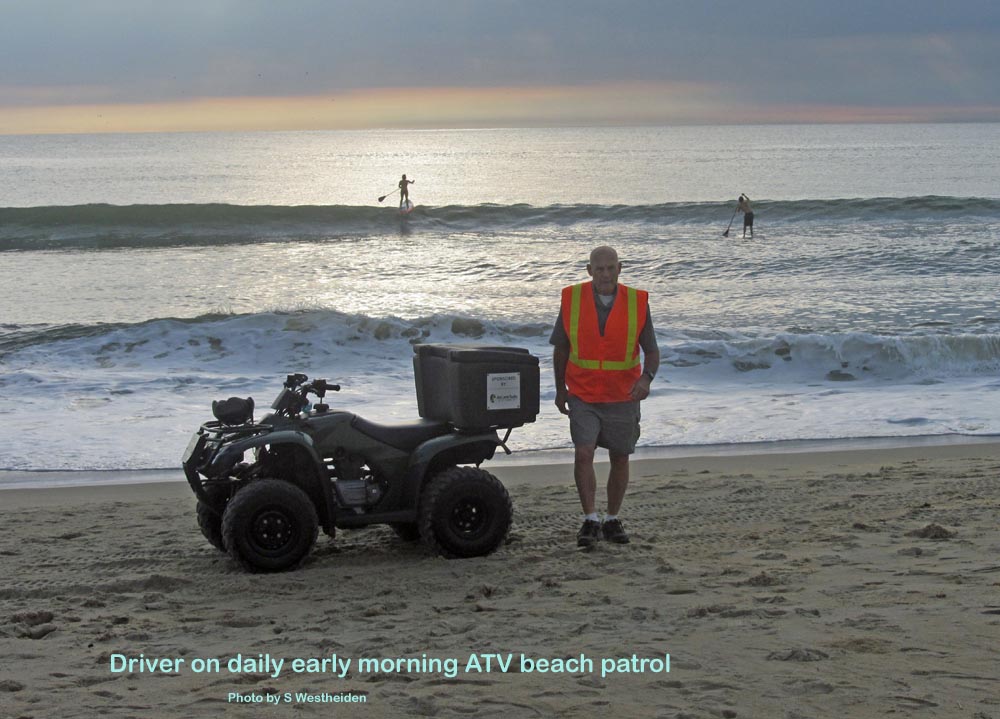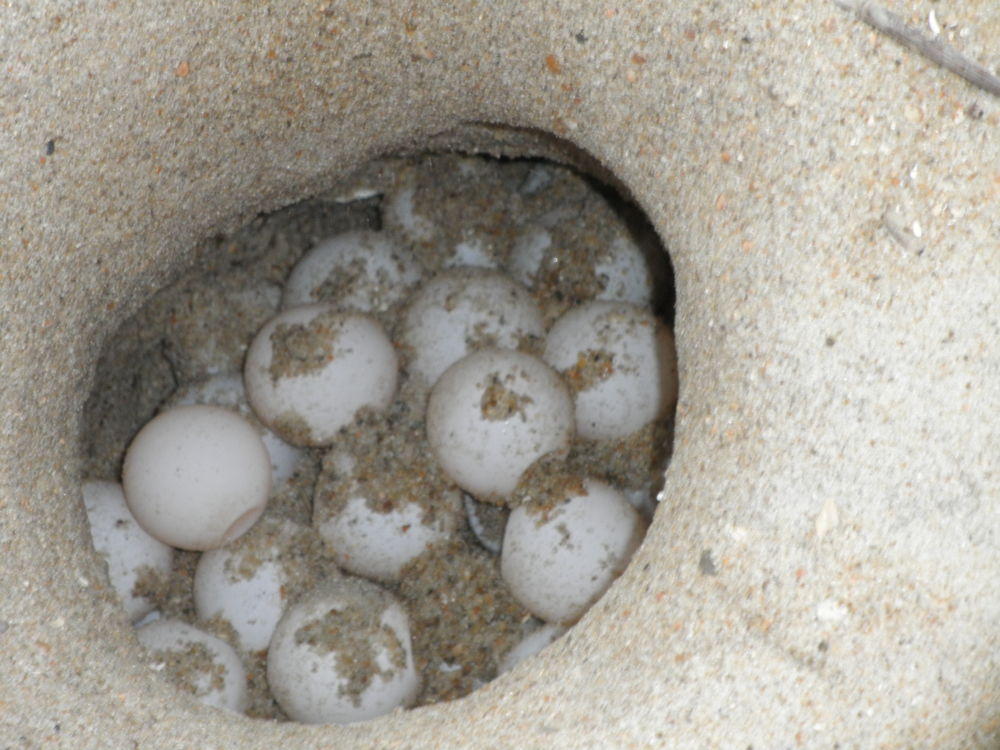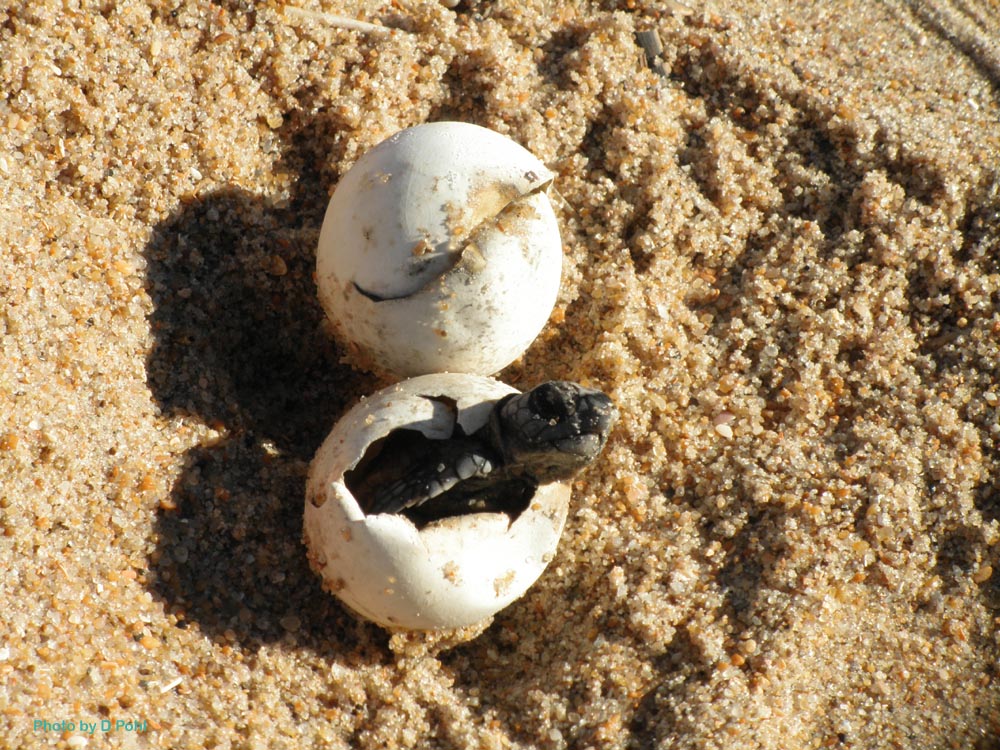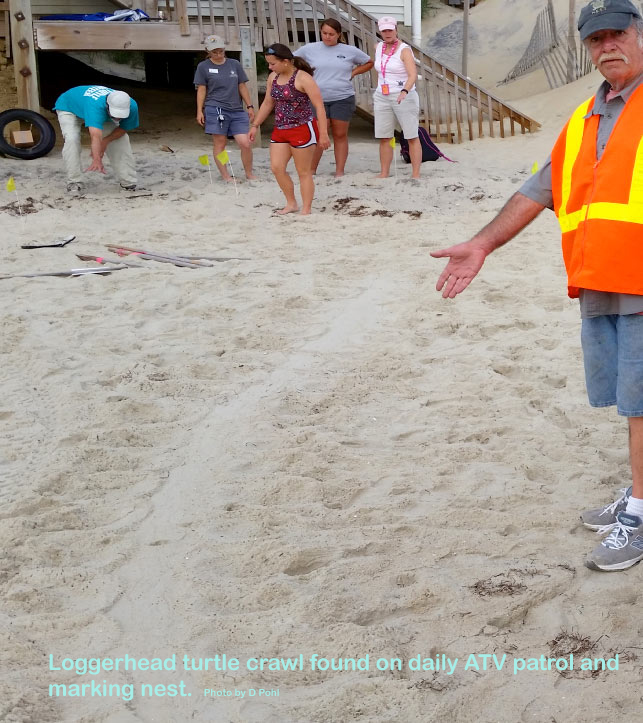Nests & Hatchlings
From May 1st to September 1st of each year, a team of N.E.S.T. volunteers on ATVs, early each morning patrol fifty miles of beach (one hundred miles round trip) between South Nags Head and the Virginia border looking for turtle crawls and nests. The patrols are early because sea turtles generally lay their eggs at night and it is easier to identify turtle crawls before visitors arrive on the beach. A crawl is the distinctive track left in the sand by a female turtle coming up on the beach to lay her eggs. The crawls of different species of turtles leave different patterns in the sand. The most common crawl seen on the Outer Banks is the Loggerhead as seen below. Some people say they look like tractor tracks.
When ATV drivers identify turtle crawls and probable nesting areas, other N.E.S.T. volunteers verify and mark the nests with rope and post descriptive signage along with a nest number. Visitors can log onto the NEST website to find out the status of their nest by referencing this number.
Once a nest has been marked, ATV drivers check the nest daily for ocean over wash and disturbance from predators. Beachgoers are also encouraged to check the nests and report any disturbance to our twenty-four hour hotline. We generally care for 10 to 20 nests each year. Each nest will have around 100 to 120 eggs. Most but not all of those eggs will hatch and emerge from the nest.
In about 60 days as hatching time nears, other teams of N.E.S.T. volunteers will begin sitting near nests in the evening when most nests hatch. The goal is to assure as many hatchlings as possible make it to the ocean. This is done by reducing predation by birds, ghost crabs, dogs and fox, as well as limiting light pollution. The hatchlings are programmed to head towards the brightest horizon, the ocean in the absence of manmade lighting. Without intervention, beach front lighting frequently disorients turtle hatchlings and can prevent them from making it to the ocean.




